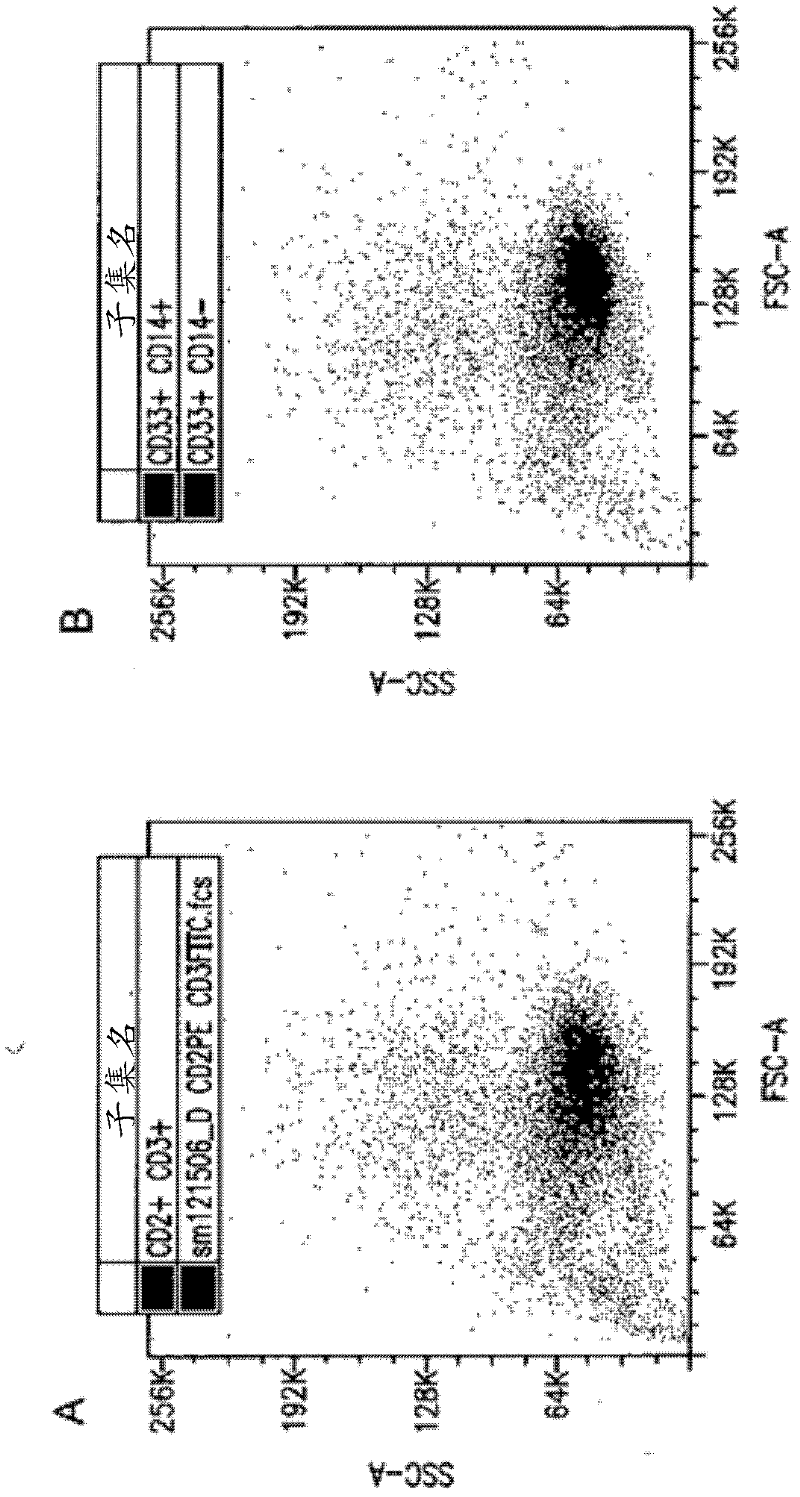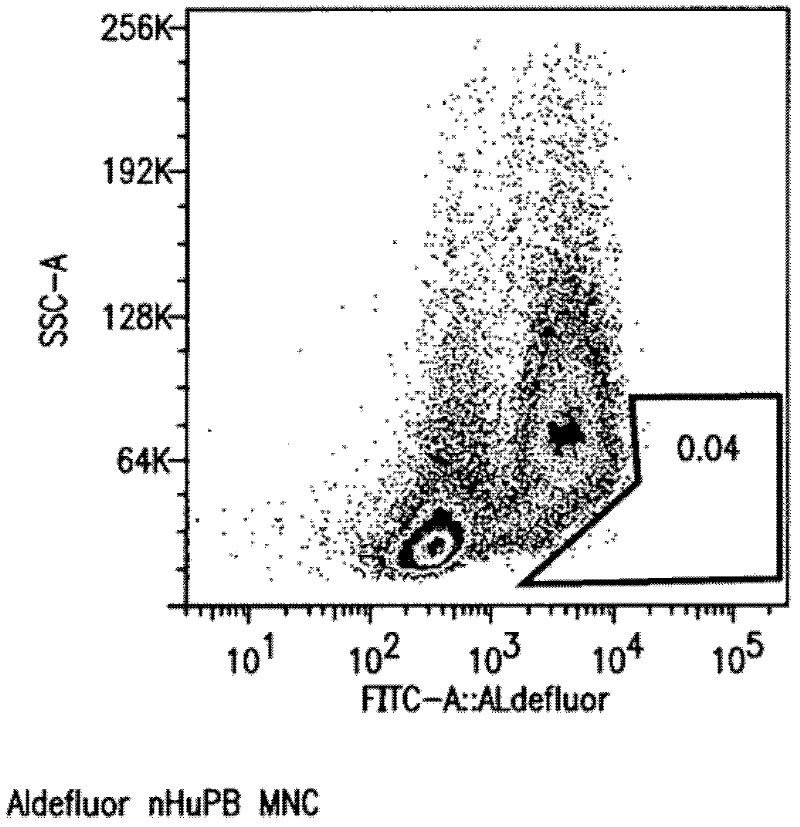Isolated monocyte populations and related therapeutic applications
A mononuclear cell and cell group technology, applied in the treatment of ocular vascular diseases, treatment or improvement of subjects' eye diseases, can solve problems such as no effective treatment methods
- Summary
- Abstract
- Description
- Claims
- Application Information
AI Technical Summary
Problems solved by technology
Method used
Image
Examples
example 1
[0082] Example 1, Isolation of a Monocyte Population
[0083] Peripheral blood or bone marrow can be used as source material for the procedures described here. As an example, we chose peripheral blood as the cell source due to its relative abundance of monocytes compared to bone marrow and the ease / safety of collection. For therapeutic use, it is desired that the cells do not have any bound compounds associated with selection. With this goal in mind, we have conceived and implemented methods to differentiate monocytes from other mononuclear cells such as lymphocytes based solely on physical properties such as size, granularity and density. The first method we have developed is based on FACS, without the use of antibodies, and sensitively separates monocytes from lymphocytes based on differences in cell size and granularity. Results showing monocyte populations isolated by this method are presented in figure 1 In A. Red blood cells and granulocytes present in whole blood ar...
example 2
[0090] Example 2, Treatment of Ocular Vascular Disease with Isolated Monocyte Populations
[0091] The therapeutic activity of monocyte populations isolated using the methods described herein was tested using a mouse model of oxygen-induced retinopathy. Oxygen-induced retinopathy mice were generated as described in Ritter et al., J. Clin. Invest. 116:3266-76, 2006. Specifically, C57BL / 6J mice were induced to develop oxygen-induced retinopathy according to the protocol described in Smith et al., Invest. Ophthalmol. Vis. Sci. 35: 101-111, 1994. As a comparison, BALB / cByJ mice were also treated with the same conditions. Briefly, P7 pups and their mothers were transferred from a room air environment to an environment containing 75% oxygen for 5 days and then returned to the room air environment. Create and maintain a hyperoxic environment using a BioSpherix chamber. Under these conditions, during hyperoxia in C57BL / 6J mice, a large hypovascular zone forms in the central retina,...
example 3
[0093]Example 3, Additional Properties and Activities of Isolated Monocyte Populations
[0094] In order to demonstrate that the cells we isolated were different from known cell populations for clinical use or development, we have labeled peripheral blood samples for the expression of aldehyde dehydrogenase, when expressed at high levels (ALDH br ), which discriminates CD34 + cells, CD133 + cell, kit + Cell, lineage antigen negative (Lin - )cell. We found that peripheral blood samples ( image 3 ) essentially lacks such markers, matching the notion that stem cells are expected to be extremely rare in immobile peripheral blood.
[0095] CD34 is a marker of hematopoietic stem cells and has been used to select cells for various clinical applications. We have found that such cells may include or adversely affect the outcome of the therapeutic applications described herein. Specifically, to determine the behavior of undifferentiated stem cells after intraocular injection, we...
PUM
 Login to View More
Login to View More Abstract
Description
Claims
Application Information
 Login to View More
Login to View More - R&D
- Intellectual Property
- Life Sciences
- Materials
- Tech Scout
- Unparalleled Data Quality
- Higher Quality Content
- 60% Fewer Hallucinations
Browse by: Latest US Patents, China's latest patents, Technical Efficacy Thesaurus, Application Domain, Technology Topic, Popular Technical Reports.
© 2025 PatSnap. All rights reserved.Legal|Privacy policy|Modern Slavery Act Transparency Statement|Sitemap|About US| Contact US: help@patsnap.com



